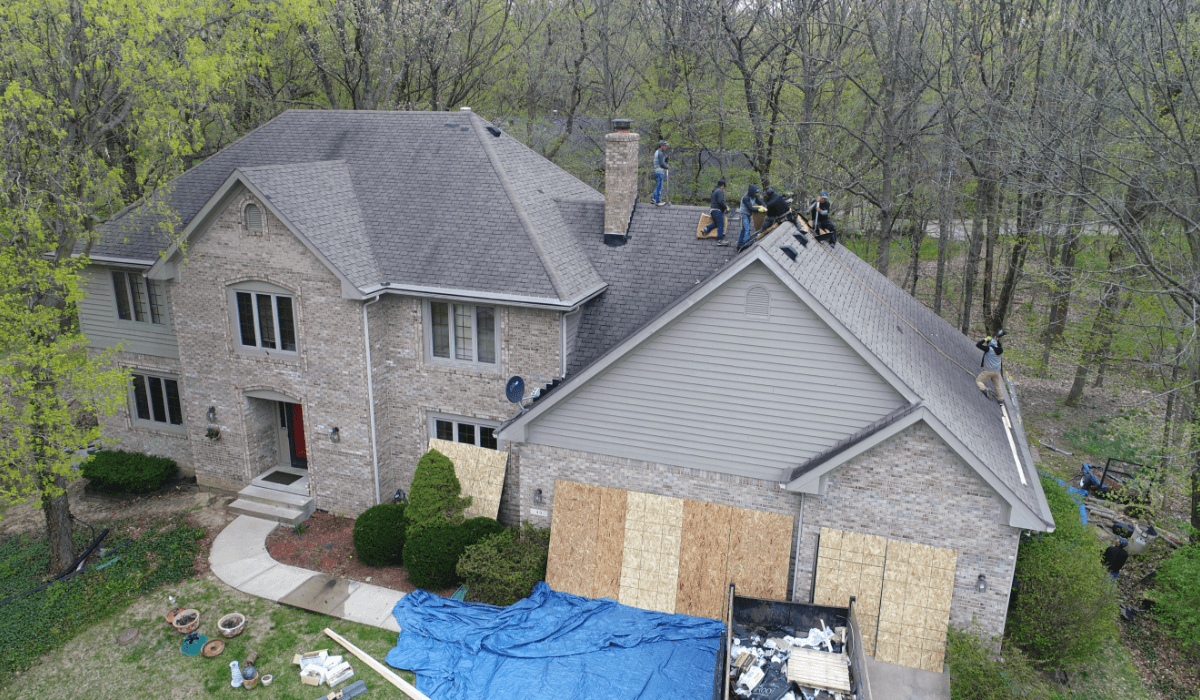Storms can wreak havoc on a property, and one of the most vulnerable parts of any structure is the roof. Whether it's heavy rain, strong winds, hail, or snow, inclement weather can cause significant damage to roofs, leading to leaks, structural issues, and potential safety hazards. Understanding what to expect during storm inspections and dealing with roof damage is crucial for homeowners and property managers alike.
Assessing the Situation:
Following a severe storm, the first step is to assess the condition of your roof. Safety should be the primary concern. Avoid climbing onto the roof yourself, especially if there's a chance of structural damage or if you're not comfortable with heights. Instead, conduct a visual inspection from the ground or through windows using binoculars.
Look for visible signs of damage such as missing or damaged shingles, dents, cracks, or displaced materials. Check for water stains on ceilings or walls, which could indicate leaks. Gutters and downspouts should also be inspected for debris accumulation or damage.
Hiring a Professional Inspector:
While a visual inspection is a good start, it's essential to have a professional inspector assess the damage thoroughly. Hiring a certified roofing contractor or inspector is highly recommended. These professionals have the expertise to identify both obvious and hidden damage. They will climb onto the roof, assess its integrity, check for compromised areas, and provide a detailed report on the extent of the damage.
Documentation and Insurance:
Documenting the damage is crucial for insurance claims. Take photographs and videos of the affected areas. Your inspector's report should include a comprehensive assessment along with recommended repairs and estimated costs. Submit these documents to your insurance company promptly to expedite the claims process.
Types of Damage:
Roof damage resulting from storms can manifest in various ways:
- Missing or Damaged Shingles: Strong winds can lift, crack, or completely remove shingles, leaving the underlying structure exposed.
- Leaks and Water Damage: Holes or cracks in the roof can cause leaks, leading to water damage inside the property.
- Dents and Bruising: Hailstorms can cause dents or bruising on roofs, compromising their integrity and lifespan.
- Gutter and Flashing Damage: High winds or debris can damage gutters and flashing, affecting the roof's ability to channel water away effectively.
Repair Process:
Once the inspection is complete and insurance matters are settled, repairs can begin. The extent of repairs will depend on the severity of the damage. It might involve simple fixes like replacing a few shingles or more extensive repairs to structural elements. Always opt for high-quality materials and skilled professionals to ensure the longevity and integrity of the repairs.
Preparing for Future Storms:
Prevention is key when it comes to protecting your roof from future storm damage. Consider these proactive measures:
- Regular Inspections: Schedule routine inspections, especially after severe weather events, to catch and address issues early.
- Trim Trees: Keep trees near your property trimmed to prevent branches from falling onto the roof during storms.
- Reinforcement: Reinforce your roof with impact-resistant materials or installations designed to withstand severe weather conditions.
Storms can bring about unforeseen challenges, especially concerning roof damage. Being proactive in assessing, documenting, and repairing storm-related issues is crucial for maintaining the safety and integrity of your property. By understanding what to expect during storm inspections and promptly addressing any damage, you can ensure that your roof remains a reliable protector against the forces of nature.
Remember, when it comes to storm damage and roof inspections, safety and professional expertise should always be prioritized. Regular maintenance and swift action in the aftermath of storms will go a long way in safeguarding your property and maintaining the longevity of your roof.



